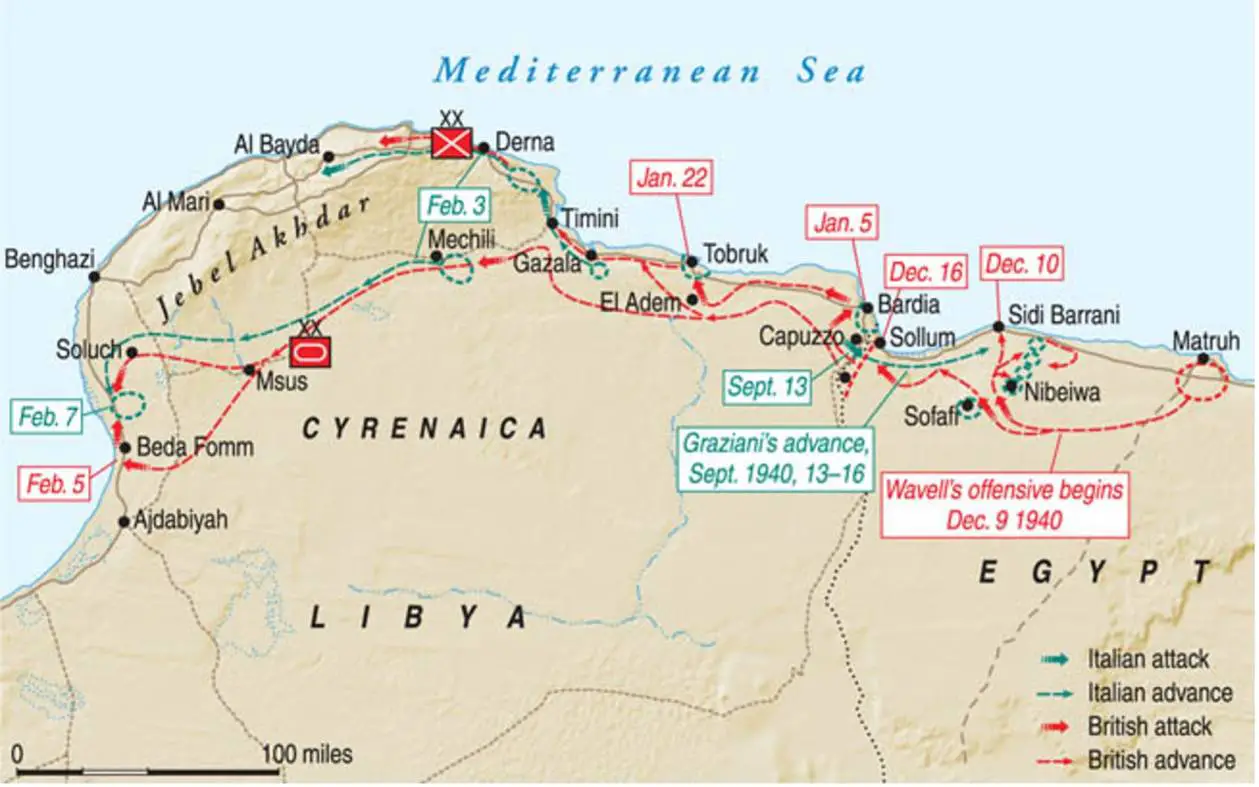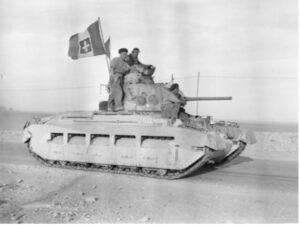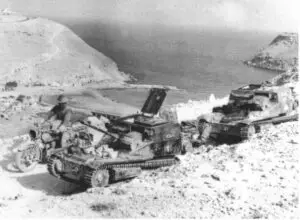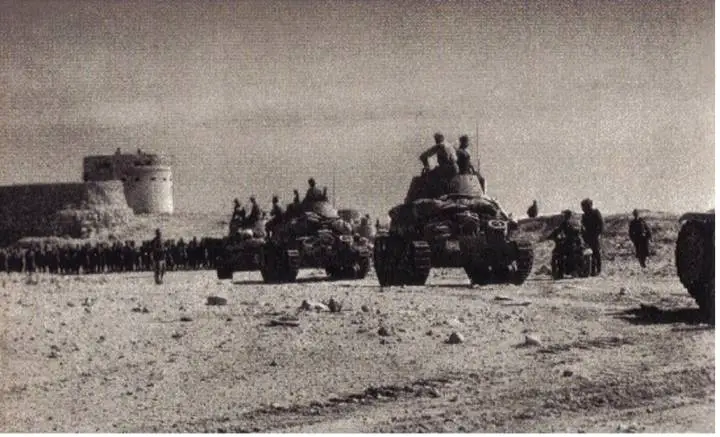Situation in December 1940
In a previous chapter, we have talked about the Italian advance into British-controlled Egypt of September 1940. In that article, we discussed the chronicle lack of equipment, trucks, and tanks that the Italian forces suffered. Nevertheless, Mussolini had decided to attack, aiming to achieve a political victory. After three days, and the capture of Sidi El Barrani, the Italian advance stalled due to a logistical overstretch and Marshal Graziani, superior commander in North Africa, ordered to dig in, forming a kind of triangular perimeter around Sidi El Barrani. The Libyan divisions and Maletti’s mobile group (with 22 M11/39 tanks) formed the eastern side while the Cirene division held the most southern point and the Catanzaro and one Black shirt division closer to Sidi El Barrani. General Bergonzoli’s XXIII corps stationed in Sollum.
Compass begins
With the Italian advance stalling, British commanders started to consider an offensive operation against the Italian defensive positions. They noted that some large gaps existed between the enemy strong points that could be exploited at night to overcome the defences and attack from the rear. On the night of the 9th of December, under the command of General Richard O’Connor, the Western Desert Force (WDF) attacked. The 7th armoured and 4th Indian divisions passed through the gap between the camps of the Cirene division and the Maletti group. They then swung back and attacked Maletti’s forces at Nibewa achieving total surprise. The Matilda tanks invested the 22 M11/39 tanks parked in the back of the camp and destroyed them before their crews could reach them. The few 47mm anti-tank guns proved ineffective against the frontal armour of the Matildas, as well as the 65 and 75mm howitzers present in the camp. Italian artillerymen fought to the last, in many cases, their positions were even invested by the enemy tanks and then annihilated. Maletti himself got killed during the action. After hours of fighting in the early morning hours, the Nibewa camp fell, the Italians had lost 800 men and other 3000 taken prisoners.

Overview of the whole campaign December 1940-February 1941.
Source: Warfare History Network
After refuelling, the Matilda tanks of the 7th Royal Tank Regiment moved north to attack the positions of the 2nd Libyan division, these units also faced the frontal attack of British Infantrymen of the “Selby force”. Once more, the Matildas proved unstoppable, Libyan infantry and one armoured battalion with L3 tankettes mounted a brave counterattack that eventually faced defeat and high casualties. Fights continued until the afternoon with the entire division annihilated or captured. Meanwhile, other British units had moved westwards, starting the encirclement of Sidi el Barrani. This, however, gave time to the Cirene and Catanzaro divisions to withdraw towards Sollum and join General Bergonzoli’s XXIII corps. Sidi el Barrani was bombarded and attacked on the 10th of December. On the 11th, being surrounded and depleted, the remaining of the two Libyan divisions and the 4th Blackshirts division surrendered.

A Matilda tank with a captured Italian flag
The Battle for Bardia
During the two chaotic days of the British offensive, Graziani had no clear idea of what was happening and where the enemy was. He constantly received requests for aid, but he could not even send the XXIII corps (in reserve) to attack the enemy tanks because there were not enough transports nor available tanks. Once it became clear that Sidi el Barrani was captured and one entire army corps had been lost, the Italian superior commander ordered to withdraw back to the Libyan-Egyptian border. The Italian forces seemed to hold their ground on their new positions, the Special armoured brigade, equipped with the new M13 tanks, also arrived on the scene, and helped to repel some incursion of the British armoured cars. Given the temporary halt of the British offensive, on the 14th of December, Graziani ordered to Bergonzoli’s XXIII corps, plus the Cirene and Catanzaro divisions to retreat to the port city of Bardia and to hold it. This was a reckless move since it put 5 divisions into a trap. In early January in fact, British mobile units and the newly arrived 6th Australian division had encircled Bardia and on the 3rd the attack from land, air and sea began. The Matilda tanks broke through the Italian perimeter in the centre, soon followed by the Australian infantry. Fights dragged on for two entire days and the Italian infantry desperately tried to stand the enemy advance with almost no anti-tank weapons. Around midday of the 5th, the last shattered battalions surrendered to the Commonwealth forces, 35.000 men were captured and around 5.000 killed or wounded, the Italians also lost 430 artillery pieces and hundreds of vehicles. Only General Bergonzoli, with 30 men, had managed to escape on foot during the night, reaching Tobruk on the 9th of January.

Disabled L3 tankettes in Bardia
The fall of Cyrenaica
After some days of re-organization, the WDF moved against Tobruk. The city was held by the Sirte infantry division, two black shirts battalions and a handful of L3 and M11 tanks. However, the defensive perimeter was double that of Bardia and the defenders were way less numerous. The WDF attacked the 21st of December, with the Matilda tanks once again breaking through the Italian perimeter and pouring in with the Australian infantry. A counterattack by few M11 tanks briefly delayed the Australian advance but soon they also were annihilated. Between the 22nd and the 23rd, all the Tobruk defenders were overrun or had surrendered. Also this time, General Bergonzoli managed to flee and escape capture. In Tobruk’s harbour, the old armoured cruiser San Giorgio, which shelled the incoming enemy for a while, was scuttled by its crew.
With Tobruk fallen, the only Italian forces remaining in Cyrenaica were Babini’s special armoured brigade (with two battalions of M13 tanks), the Sabratha infantry division, detached from the 5th army in Tripolitania and around 5.000 men remnants of destroyed units, led by General Bergonzoli. Graziani ordered to mount another defensive line, this time around the town of Derna. However, the terrain did not favour any concrete defence and the Italian units available were few and demoralized.
O’Connor pushed his offensive towards Derna, 170 km west of Tobruk, elements of the 7th armoured division clashed with Babini’s armoured brigade (strong of 57 M13/40 tanks) in the only real tank vs tank engagement of Operation Compass. The Italians used for the first time a concentrated armoured force and repelled the advancing enemy, losing 7 tanks and destroying 2 cruiser tanks and 7 Vickers light tanks. However, this event proved useless since other British mobile units were raiding all across the front and Italian commands ordered to withdraw towards Benghazi, preparing for the evacuation of Cyrenaica.

Italian M13/40 tanks at Mechili
Epilogue at Beda Fomm
The retreat of the remaining Italian forces, around 20.000 shattered men and 100 tanks (half were M13), began on the 2nd of February, along the road connecting Benghazi with Tripoli. O’Connor realized that he had a chance to cut the way to the retreating enemy by sending his mobile unit across the Libyan desert, hoping to block the coastal road before the arrival of the Italians. Elements of the 7th armoured division (the Combe force) rushed through the desert and managed to arrive on the coastal road, near Sidi Saleh, around 30 minutes before the arrival of the Italian columns. In the afternoon of the 5th of February, they formed a roadblock and opened fire on the incoming Italians, who had to halt their march. Later on, the 4th British armoured brigade arrived from Beda Fomm and attacked the exposed flank of the Italian column. The battle raged on until the evening of the 6th, it was essentially a confused melee with attacks and counterattacks from each side, and the remnants of the 10th Army desperately trying to repel the attackers on their flank and breaking through the southern roadblock. In these attempts, Babini’s armoured brigade and its M13 tanks were all lost amid relentless fighting. Having lost all its armour, the 20.000 Italians found themselves surrounded and surrendered to the WDF.
Operation Compass had ended in complete disaster for the Italians, one entire army was lost (130.000 prisoners) together with hundreds of tanks, trucks, artillery pieces and tankettes. This was the obvious result of an ill-prepared campaign, where a poorly led Infantry army, lacking transports, decent armour and anti-tank weapons faced a smaller but very mobile force equipped with a strong armoured component.

Destroyed Italian vehicles at Beda Fomm
Sources
Montanari, M. (1990). Le operazioni in Africa Settentronale, Volume I: Sidi El Barrani. Ufficio storico SME.
Santangelo, A. (2012). Operazione Compass: La caporetto del deserto .
